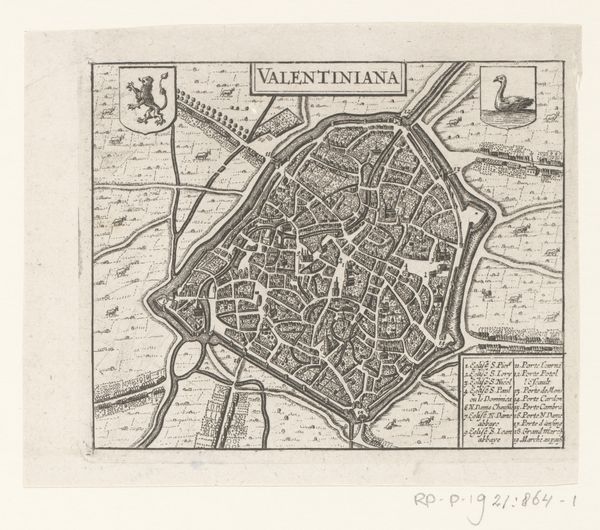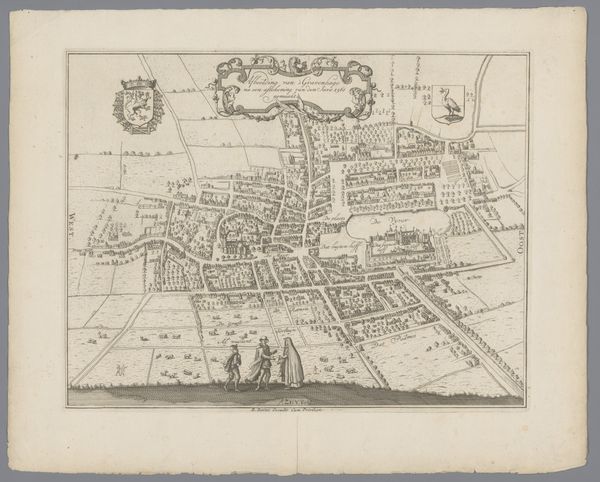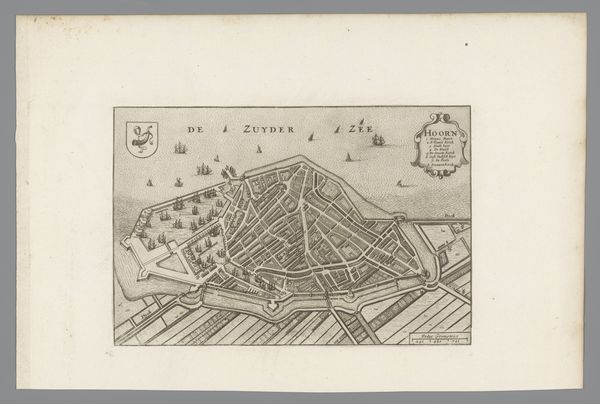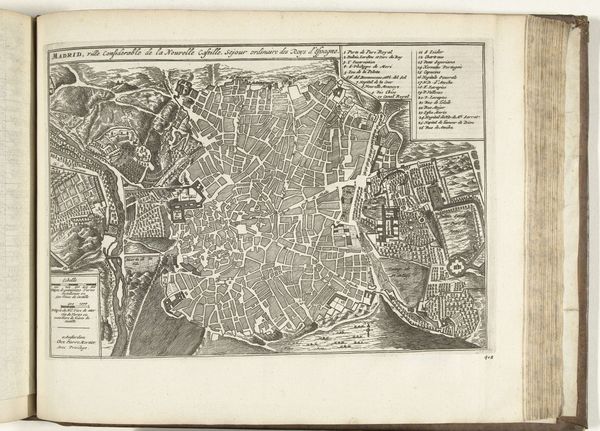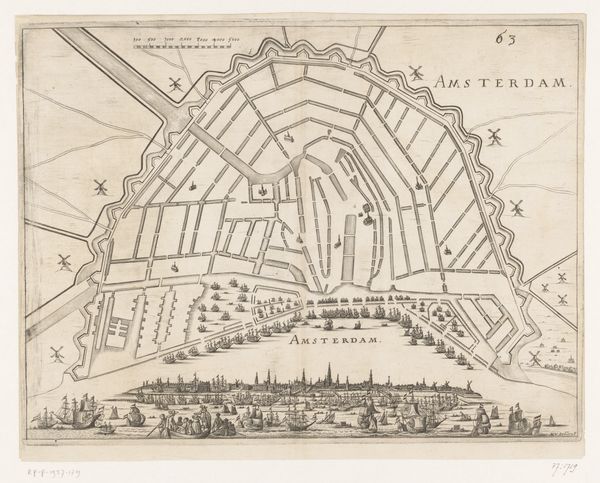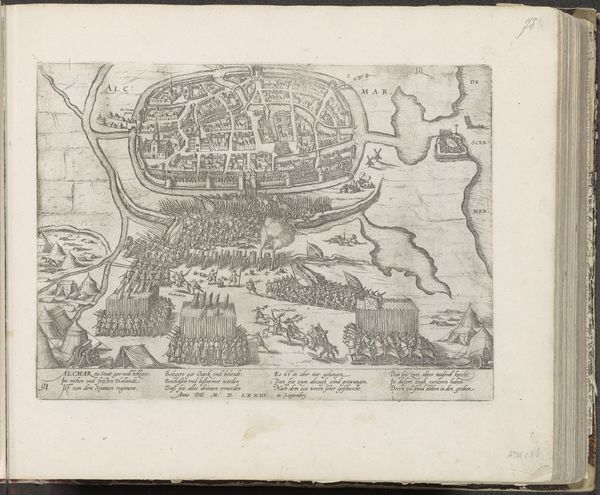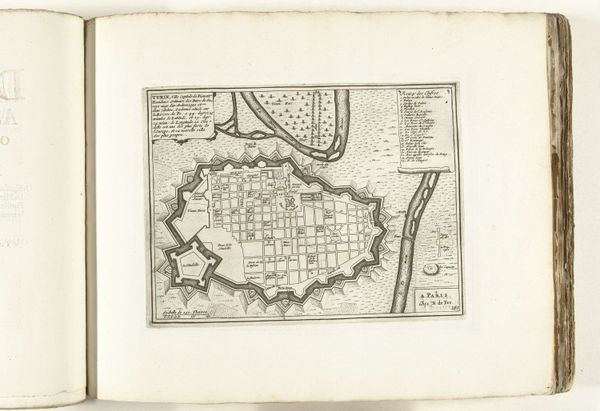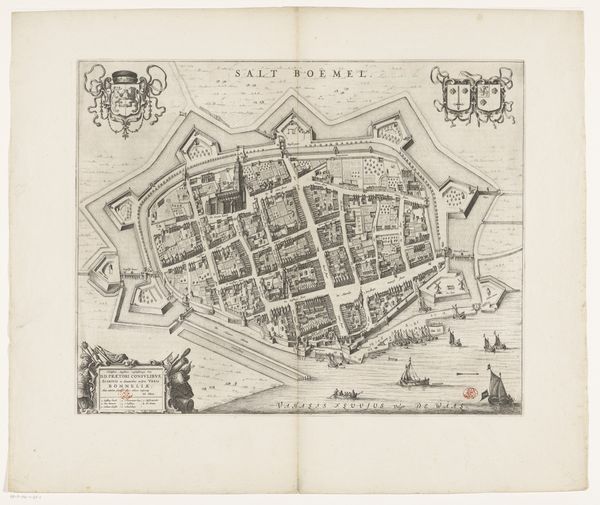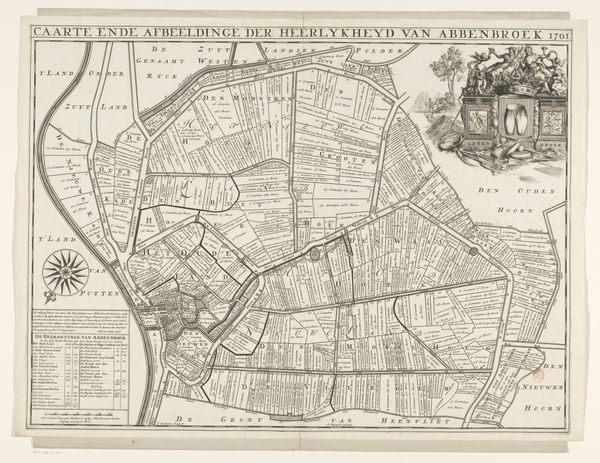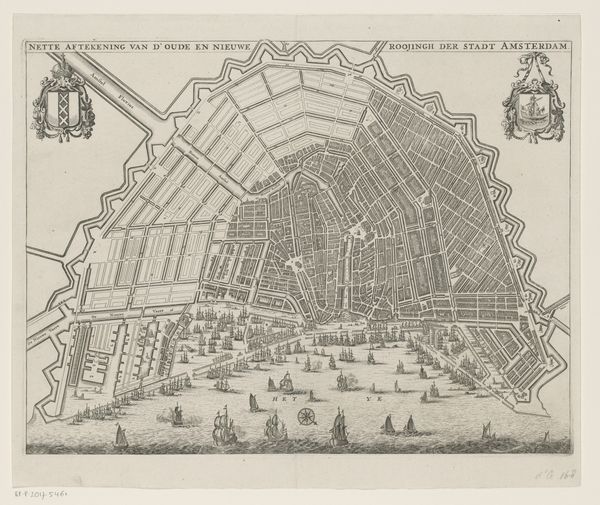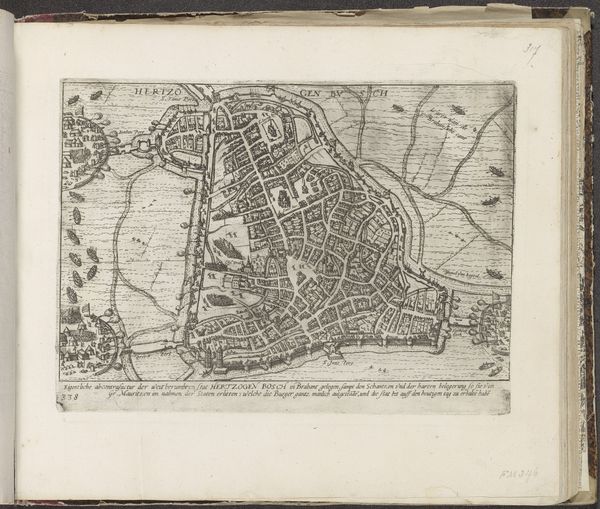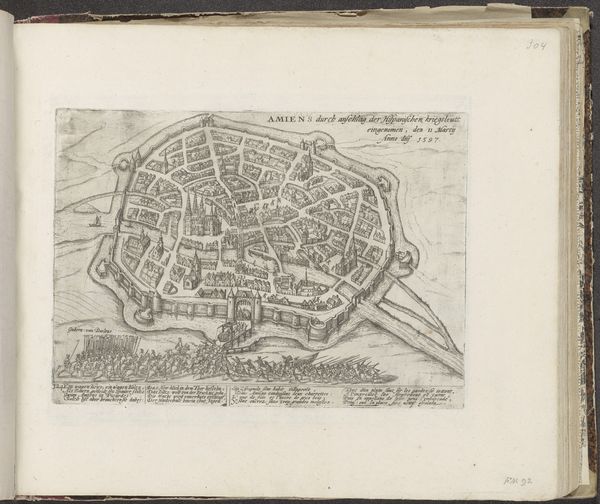
print, engraving
#
dutch-golden-age
# print
#
landscape
#
engraving
Dimensions: height 522 mm, width 632 mm
Copyright: Rijks Museum: Open Domain
Editor: This is a section of the “Kaart van het dijkgraafschap Drechterland,” created around 1775 by an anonymous artist. It’s a print, an engraving of a Dutch landscape. It's striking how geometric and organized the fields look. What strikes you when you look at this? Curator: The most compelling element for me is the meticulousness of the lines. Consider the formal properties: the stark contrast between the landmass and the surrounding water, the precise rendering of each individual field. The stippling of the ships in the sea contrasting with the uniform hatch marks forming the fields and indicating terrain – all these elements work together to create a powerful sense of order and control, wouldn’t you agree? Editor: Definitely. The detail is incredible, especially the tiny lettering naming all the different sections. It's fascinating to see how the artist balances informational accuracy with artistic composition. How does this relate to other landscape engravings? Curator: Comparing this with other landscape prints reveals a lot. Look closely at the way the waterways are handled - notice how the light catches the water with contrasting mark-making, almost mimicking the shine and undulation of water? These stylistic choices seem deliberate, directing the eye through the image. Also, the grid format imposed by the engraving’s lines and organization seem in complete opposition to a romantic perspective of landscapes, favoring rather scientific dissection. Don't you find it to have a clinical feel? Editor: It does, now that you point it out. So, focusing on these choices allows you to really interpret the overall image? Curator: Exactly! By understanding these formal decisions, you arrive at a deeper awareness of meaning and the power of lines and shapes. Editor: Thanks. That helps me see how much the method shapes what we see in this print. Curator: Likewise!
Comments
No comments
Be the first to comment and join the conversation on the ultimate creative platform.
